Module 3 - Benjamin-Mills
Module 3 - Benjamin-Mills
Module 3 - Benjamin-Mills
You also want an ePaper? Increase the reach of your titles
YUMPU automatically turns print PDFs into web optimized ePapers that Google loves.
SS1.2<br />
A redox titration<br />
In this activity you use a solution of potassium<br />
manganate(VII) to carry out a redox titration to<br />
investigate the oxidisable material present in spinach.<br />
Requirements<br />
● spinach/spinach beet (15 g) or rhubarb leaves (5 g)<br />
●<br />
●<br />
scissors<br />
250 cm 3 beaker<br />
● sulphuric acid, 1.0 mol dm –3 (300 cm 3 )<br />
sulphuric acid<br />
IRRITANT<br />
●<br />
●<br />
●<br />
●<br />
●<br />
●<br />
●<br />
●<br />
100 cm 3 measuring cylinder<br />
Bunsen burner, tripod and gauze<br />
Buchner funnel and vacuum filtration apparatus<br />
100 cm 3 volumetric flask<br />
10 cm 3 pipette amd pipette filler<br />
250 cm 3 conical flask<br />
0–110 °C thermometer<br />
burette<br />
● potassium manganate(VII) solution, 0.01 mol dm –3<br />
(150 cm 3 )<br />
●<br />
protective gloves<br />
CARE Eye protection<br />
must be worn.<br />
WEAR EYE<br />
PROTECTION<br />
CARE Take care when pouring potassium<br />
manganate(VII) solution as it stains the hands.<br />
Wear protective gloves if necessary.<br />
Introduction<br />
Iron is an important mineral element in foods. The recommended intake for<br />
adults is 10–15 mg per day and each person contains about 4 g of iron, mainly in<br />
the haemoglobin of red blood cells. Surprisingly human beings absorb less than<br />
10% of the iron in their diet. The reason for this is that only iron(II) ions are<br />
absorbed whereas most of the iron in foods is iron(III). Vitamin C reduces a<br />
small proportion of the iron(III) to iron(II) and ensures that it does not reoxidise.<br />
Spinach and spinach beet have a high iron(II) content (4 mg per 100 g) but<br />
this cannot be absorbed in the stomach because it is locked up in insoluble<br />
oxalate (ethandioate) complexes.<br />
This experiment investigates the amount of iron(II) and oxalate present in<br />
spinach by means of a redox titration.<br />
204<br />
What you do<br />
1 Weigh approximately 15 g of spinach/spinach beet. (If using rhubarb leaf<br />
substitute, only use 5 g and remember it is poisonous if eaten due to the<br />
high oxalate content.)<br />
2 Using scissors, cut the leaves into small pieces and place in a 250 cm 3 beaker.<br />
(If frozen spinach is used then simply place in the 250 cm 3 beaker.)<br />
3 Using a measuring cylinder, add 50 cm 3 1.0 mol dm –3 sulphuric acid (CARE<br />
Irritant) and boil the mixture gently for 5 minutes.<br />
4 Allow the mixture to cool a little and filter it, using a Buchner funnel and<br />
vacuum filtration. Wash the residue in the funnel once with a little distilled<br />
water and collect all the filtrate.<br />
5 Pour all the filtrate and washings into a 100 cm 3 volumetric flask. Make up to<br />
100 cm 3 with 1.0 mol dm –3 sulphuric acid. Stopper the flask and shake it well.<br />
6 Fill a burette with potassium manganate(VII) solution. (CARE Stains the<br />
hands. Avoid skin contact and wear protective gloves if necessary.)<br />
7 Using a pipette, transfer 10 cm 3 of the spinach extract solution to a 250 cm 3<br />
conical flask and add 50 cm 3 of 1.0 mol dm –3 sulphuric acid using a measuring<br />
cylinder. Heat the mixture to 60 °C.<br />
8 Titrate the solution in the conical flask with 0.01 mol dm –3 potassium<br />
manganate(VII) solution from the burette until the pink colour persists for<br />
30 seconds.<br />
„ Salters Advanced Chemistry 2000 – see Copyright restrictions



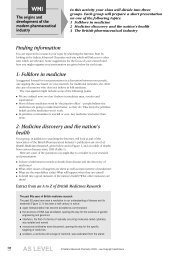
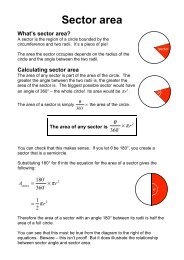
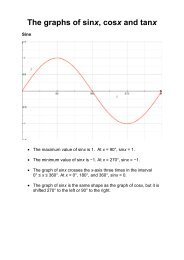
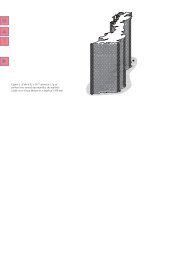

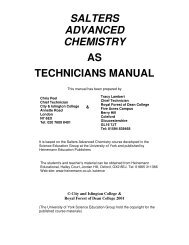



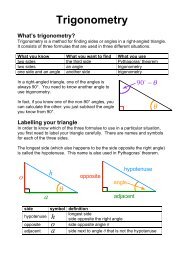
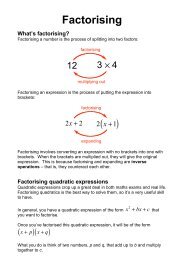
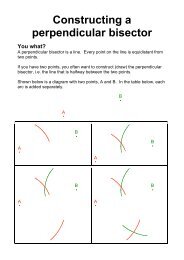

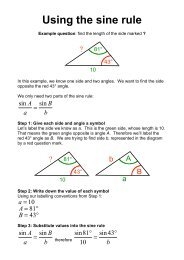
![ISI Web of Knowledge [v.4.10] - All Databases Results - Benjamin-Mills](https://img.yumpu.com/39253071/1/184x260/isi-web-of-knowledge-v410-all-databases-results-benjamin-mills.jpg?quality=85)